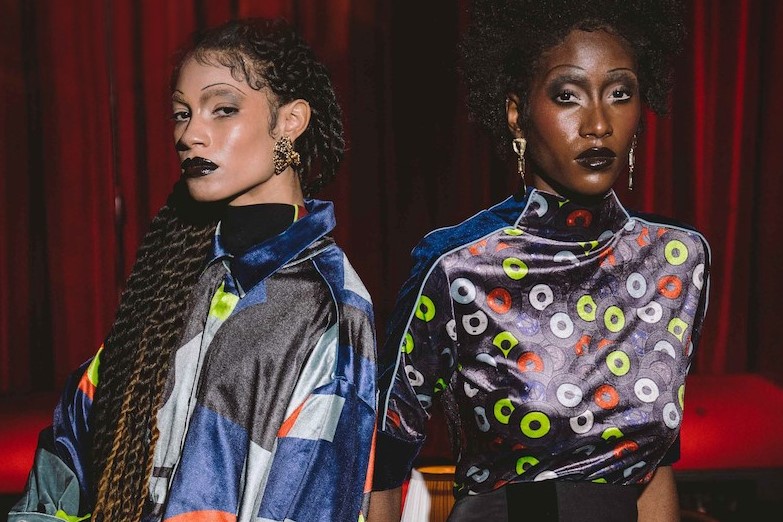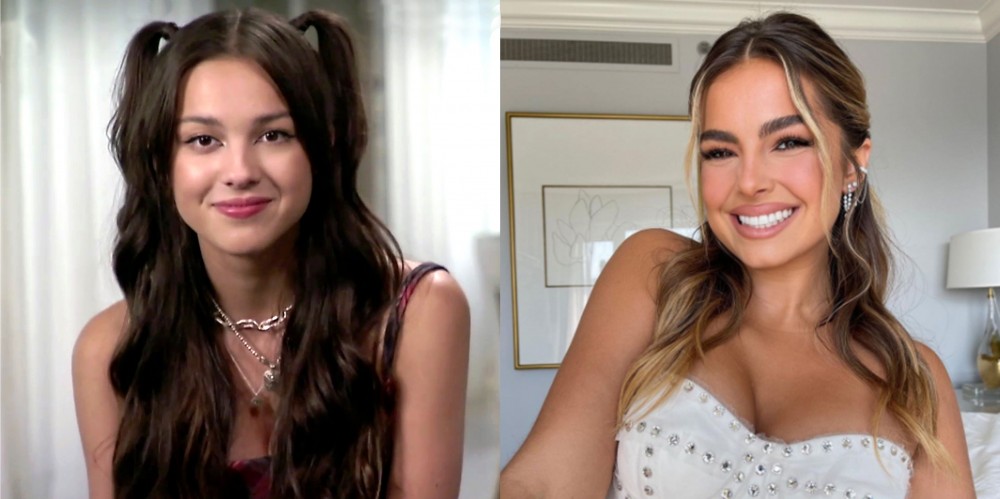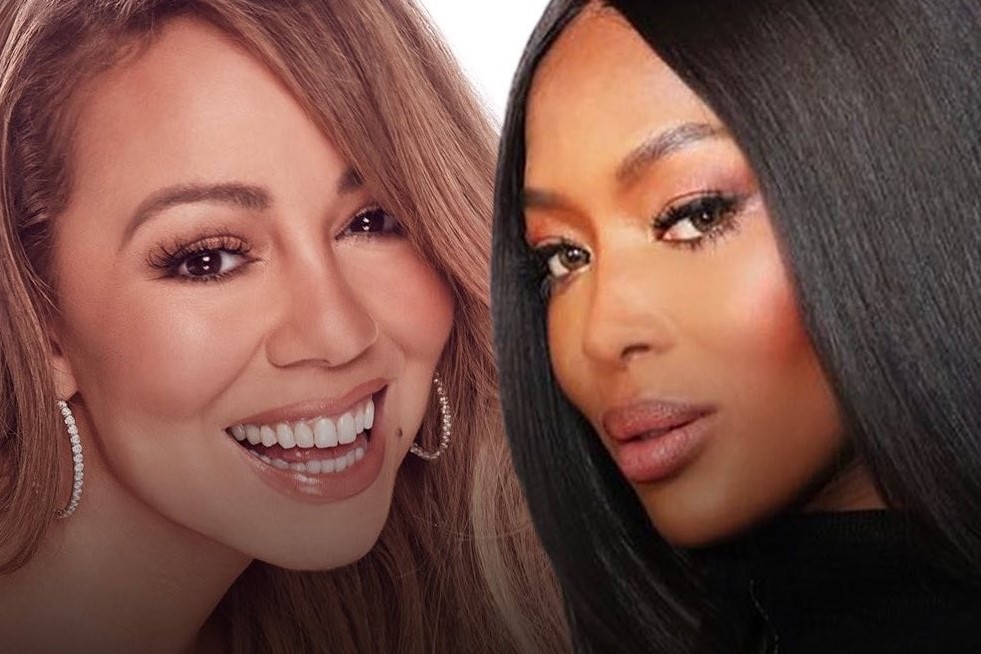
Meet the next generation of Black talent in fashion
Co-signed by the Black in Fashion Council and showing as part of its NYFW showcase, these are up-and-coming creatives you should know about
In between a busy (digital) schedule filled with collections from the likes of Collina Strada, Proenza Schouler, and more, this season New York Fashion Week played host to a showroom of discovery.
Held this week across four days, the space came courtesy of the Black in Fashion Council and spotlighted the collections of 16 up-and-coming Black designers. The second in a series of its kind, the showroom followed in the footsteps of the initiative’s highly successful debut, which took place during September’s SS21 shows.
“People were excited to talk about fashion in such an uncertain time and eager to celebrate and support Black designers they had never heard of,” Linsday Peoples Wagner, co-founder of the BIFC and editor of The Cut, says of the first showroom. “More than ever, creatives have needed support, and the showroom provided so much of that in allowing designers to stay connected to people in the industry and find new ways of selling and getting their brand out there.”
Thanks to the subsequent flood of interest from other Black designers looking for a platform to bring their work to the world, the BIFC returned to NYFW this season with a supersized schedule representing talent from across the industry – with shoes and jewellery, as well as ready-to-wear, on the line-up.
“To us, it doesn’t matter how many followers they have or if you’ve never heard this designer’s name before because talent is talent, and being part of this showroom allows them to be put on the platform that they deserve” – Sandrine Charles
“We cast a wide net and like to look at many different brands and their portfolio and what they’re bringing to the table instead of where they’ve been featured before and or what awards they’ve won,” says co-founder and PR specialist Sandrine Charles. “To us, it doesn’t matter how many followers they have or if you’ve never heard this designer’s name before because talent is talent, and being part of this showroom allows them to be put on the platform that they deserve.”
While the fashion industry has worked hard to cultivate a glossy veneer of progressiveness in recent years, beneath the surface remains a notoriously racist environment. This became all too clear last summer with the industry’s failure to get involved in the fight for equality following the wave of global Black Lives Matter demonstrations.
The Black in Fashion Council was set up in an effort to combat this historic and deeply entrenched racism. Led by Peoples Wagner and Charles, the BIFC works to advocate for and secure the advancement of Black people in fashion. The showrooms, which sit alongside other initiatives including an educational YouTube series in partnership with Depop, are an important part of this work.
As the showrooms come to a close, we spoke to some of the featured designers that should be on your radar.
BEADS BYAREE
Founded by designer Areeayl Goodwin in 2011, jewellery line Beads Byaree’s hand-crafted designs turn unlikely materials – including wire, shells, carved stones, and miniature picture frames – into pieces of art. “I believe ‘home’ and our concept of ‘heaven’ can be everywhere we are, and I want to create pieces that allow people to carry symbolism that reminds them of the people, energies, places, and times in life where they feel home, welcomed, comfortable, and protected,” says Goodwin.
Beads Byaree’s unique, intricate statement pieces have earned the brand high profile fans over the last few years, with Beyoncé, Tracee Ellis Ross, and Adut Akech among them. In 2019, Goodwin created the powerful earrings Indya Moore wore at the Daily Front Row Fashion Media Awards as a tribute to and in solidarity with trans women across America.
This season, Beads Byaree showed a collection named Going Back Home, which was inspired by Goodwin’s return to her home in Philadelphia following the sudden illness and passing of her best friend. “I wanted to create pieces that honoured the nature of life and help find balance, love, and healing.” Presenting her collection at the BIFC showroom, she says, was beyond an honour. “I have found joy in meeting the other designers that are showcasing along with me. I’ve learned so much from my peers and feel we are building a strong community and support system.”
MARRISA WILSON
After impressive experience in the industry, including stints at Oscar de la Renta, rag & bone, and Calvin Klein, Guyanese-American designer Marrisa Wilson founded her namesake brand in 2016. Built on the twin tenets of self love and women supporting women, the label’s aesthetic is influenced by soulful sounds and eclectic interior spaces, and its designs heavily feature bold textiles and vibrant printed artwork. “When I started MWNY, I wanted to create a brand that celebrated the multifaceted aspects of a woman’s personality,” says Wilson.
The BIFC presentation is the brand’s first official NYFW showcase, which Wilson says has been a rollercoaster of emotions. Her AW21 collection, To Be Black and Female, was inspired by the Harlem Renaissance and looks to the legendary Cotton Club as well as W E B DuBois’ concept of double consciousness to draw parallels from the social movement of Black America in the 1920s to today. “This collection was created to showcase our voice, our bodies, and our spirit. It’s not looking for an audience. It’s not asking for permission. It’s spirited, lively, and cool – and it’s for our approval only.”
The collection was a leap of faith for Wilson, who wasn’t able to see so much as a fabric swatch let alone a prototype due to lockdown restrictions. All things considered, though, she says she is proud of the collection and of being a part of the showcase. “It’s really gratifying to see that Black designers are having this moment, that our work is being seen and our voices heard,” she says. “And I’m even more so looking forward to being a part of the long-term work that’s needed in order to make real, substantive change.”
EDAS
Edas’ playful beaded hats, sculptural jewellery, and sleek leather handbags are statement pieces in the truest sense – bold, unique, and sure to attract compliments wherever you go. Founded in 2015, Edas started off life as a jewellery line before branching out into other accessories, all with a sustainable focus. “I wanted to create a brand that spoke to the eclectic being,” says founder Sade Mims. “Someone who loved pairing old and new, for someone who appreciated classic silhouettes and styles.”
Usually someone who finds inspiration in the limitless visual stimulation of the streets of New York, the pandemic forced Mims to shift focus and look inwards. This sense of introspection is present in the collection Edas presented this season ,which reintroduces old classics and embraces archival styles in new ways. “I think the moments of stillness that I had allowed me to really find new ways to love our pieces from an updated perspective,” she explains. “It wasn’t easy at all, but the silver lining was I got to appreciate what was in front of me, shifting my focus from wanting to create something completely new to embracing what already exists.”
Grateful for the showcase, Mims says it has provided the visibility Back creatives have been looking for in the industry. “The talent is there!” she says. “There are so many talented artists who simply need to be discovered and given access to be a part of the conversations. It’s really important that these types of platforms exist, because they make space for us and inspire us to keep at it.”
HOUSE OF AAMA
Founded by mother-daughter duo Rebecca Henry and Akua Shabaka, House of Aama celebrates Black culture and folklore with its regal and often historically influenced designs. Since its debut in 2015, the label has worked with traditional African fabrics and motifs to create unisex collections that pay homage to the culture and spirituality of their ancestors, while still staying grounded in the present moment. “Our aim is to tell stories from the Black experience by reviewing historical archives, conducting field research, and shedding light on nuanced histories hiding in plain sight,” they say.
With an eye on sustainability, their designs are crafted from eco-friendly materials and made to order in Los Angeles so as to minimise the label’s carbon footprint. Entirely self-funded and operated by Henry and Shabaka – “we wear all of the hats in our business” – the showcase has come at a perfect time. “We are excited to be included in the BIFC showcase with the other designers. This is an opportunity for us to connect with buyers and explore wholesale and retail opportunities that we are interested in exploring.”
Alongside a capsule offering of scarves, halters and tops, the brand also presented its Bloodroot Heritage collection, which launched its rebrand in 2017. An ode to Southern Creole spiritually and African roots, the line takes inspiration from Southern parlour ladies, conjurer women, and bluesmen.
KENDRA DUPLANTIER
Kendra DuPlantier’s namesake womenswear line was only founded in 2019, but it’s been years of education, experience, and hard work in the making. Described by DuPlantier as “thoughtful designs that explore femininity,” the brand’s first capsule collection celebrated the female form with its selection of asymmetric tops, tailored trousers, and simple, sexy slip dresses. Following her philosophy of slow and ethical fashion to wear season after season, the clothes are striking – timeless, delicate pieces that are at once romantic and modern.
After originally launching her debut collection online, the BIFC showcase has given DuPlantier the space to present herself and her brand in person. “What they are building with the BIFC Discovery Showroom is so special, from the resources provided to connecting talented designers to one another,” she says. “I’m forever thankful for the opportunity.”
While there have been days of struggle during the pandemic lockdown, DuPlantier says she has also been able to see the glass half full, a silver lining to the dark clouds. “It has given me more time to get back in touch with myself mentally, spiritually, creatively,” she says. “It’s given me time to prepare for what’s next. The whole world is on pause making it the perfect time to sharpen your tools and be ready for when things start moving again.”



